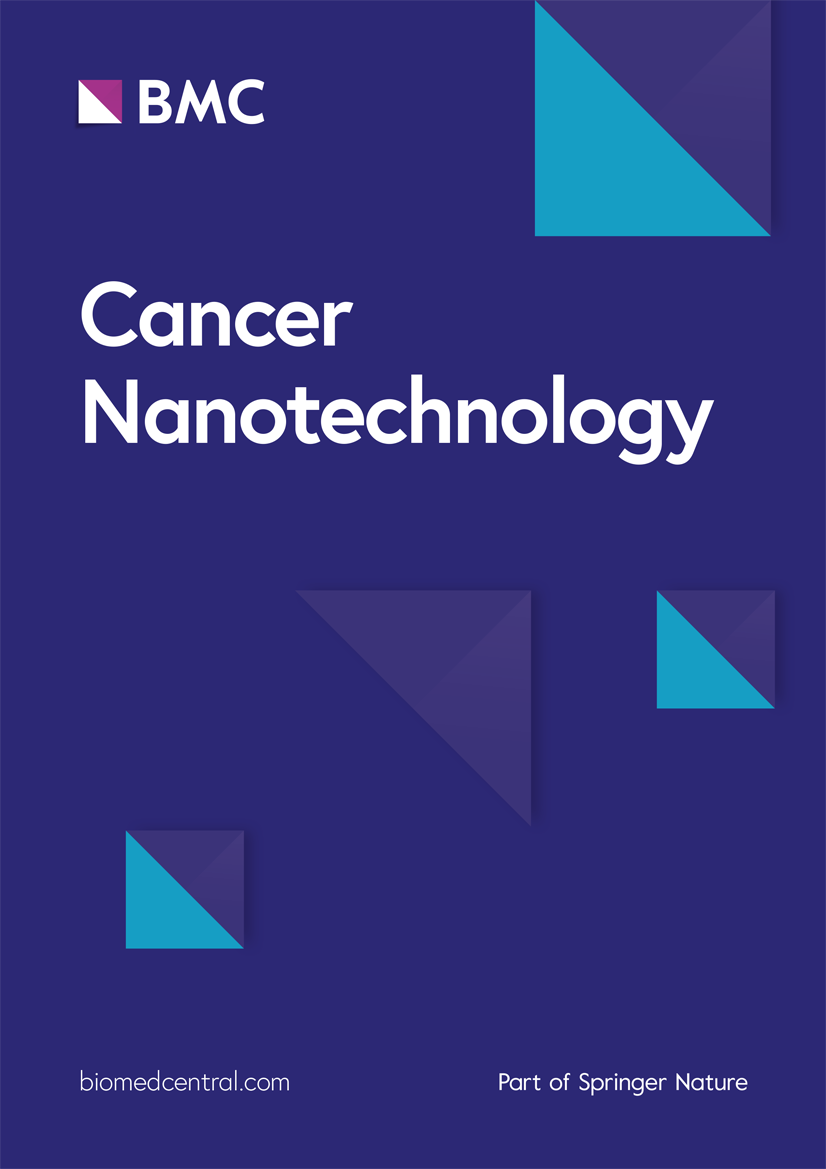载入卡铂的银纳米粒子的合成与表征--一种潜在的抗菌剂和癌症疗法
IF 4.8
2区 工程技术
Q2 NANOSCIENCE & NANOTECHNOLOGY
引用次数: 0
摘要
最近关于银纳米粒子的研究表明,在载体药物系统中使用纳米粒子可增强对肿瘤的抑制作用,并减少与药物相关的副作用。同时,传统医学与纳米技术的结合为开发新型抗菌剂提供了机会。本研究旨在确定银纳米粒子(AgNPs)和卡铂载银纳米粒子(AgNPs-Car)的抗癌、抗菌活性和促凋亡作用。通过 DLS、EDX-STEM 和 FTIR 分析对合成的纳米粒子进行了表征研究。使用 XTT 和 Annexin V 分别评估了这些分子的抗增殖和促凋亡作用。MIC(最低抑菌浓度)测试用于确定抗菌活性。AgNPs-Car 对 MCF-7(人乳腺癌)、A549(人肺癌)和 C6(脑胶质瘤)细胞的抗癌活性很高。选择性细胞毒性活性最强的细胞组是 C6 细胞。研究还表明,AgNPs-Car 和 AgNPs 能诱导 DNA 断裂,最终导致细胞凋亡。评估了 AgNPs 和 AgNPs-Car 对革兰氏阳性和革兰氏阴性病原微生物以及酵母真菌的抗菌活性。根据参考来源,在达到有效 MIC 值的纳米材料中,AgNPs-Car 的效果更好。结果发现,AgNPs-Car 通过促进药物进入细胞,非常成功地靶向了 C6 胶质瘤细胞。此外,它们对 MCF-7 和 A549 细胞的抗癌活性高,毒性低。银纳米粒子因其优质的特性和效果,成为创建更好的药物载体系统的首选。因此,这是一个针对癌细胞和病原微生物的有趣研究领域。本文章由计算机程序翻译,如有差异,请以英文原文为准。
Synthesis and characterization of silver nanoparticles loaded with carboplatin as a potential antimicrobial and cancer therapy
In recent studies with silver nanoparticles, it has been reported that the use of nanoparticles in carrier drug systems increases tumor suppression and reduces drug-related side effects. At the same time, the combination of traditional medicine with nanotechnology provides the opportunity to develop new antimicrobial agents. The aim of this study was to determine the anticancer, antimicrobial activities and pro-apoptotic effects of silver nanoparticles (AgNPs), and carboplatin-loaded silver nanoparticles (AgNPs-Car). Characterization studies of the synthesized nanoparticles were carried out by DLS, EDX-STEM, and FTIR analysis. The antiproliferative and pro-apoptotic effects of these molecules were evaluated using XTT and Annexin V, respectively. MIC (Minimum Inhibitory Concentration) test was used to determine the antimicrobial activity. The anticancer activity of the AgNPs-Car was high in MCF-7 (human breast adenocarcinoma), A549 (human lung carcinoma), and C6 (brain glioma) cells. The cell group with the most effective selective cytotoxic activity was C6 cells. It was also shown that AgNPs-Car and AgNPs induced DNA fragmentation eventually increasing apoptosis of cells. The antimicrobial activity of AgNPs and AgNPs-Car was evaluated on Gram-positive and Gram-negative pathogenic microorganisms and yeast fungi. Among the nanomaterials that reached effective MIC values according to reference sources, AgNPs-Car achieved better results. As a result, AgNPs-Car was found to be very successful in targeting C6 glioma cells by facilitating cell entry of the drug. In addition, their anticancer activity on MCF-7 and A549 cells was high and their toxicity was low. Silver nanoparticles are preferred for creating a better drug carrier system because of their qualitative properties and effects. Therefore, it is an interesting field for research on targeting cancer cells and pathogenic microorganisms.
求助全文
通过发布文献求助,成功后即可免费获取论文全文。
去求助
来源期刊

Cancer Nanotechnology
Pharmacology, Toxicology and Pharmaceutics-Pharmaceutical Science
CiteScore
5.20
自引率
1.80%
发文量
37
审稿时长
15 weeks
期刊介绍:
Aim:
Recognizing cancer as a group of diseases caused by nanostructural problems (i.e. with DNA) and also that there are unique benefits to approaches inherently involving nanoscale structures and processes to treat the disease, the journal Cancer Nanotechnology aims to disseminate cutting edge research; to promote emerging trends in the use of nanostructures and the induction of nanoscale processes for the prevention, diagnosis, treatment of cancer; and to cover related ancillary areas.
Scope:
Articles describing original research in the use of nanostructures and the induction of nanoscale processes for the prevention, diagnosis and treatment of cancer (open submission process). Review, editorial and tutorial articles picking up on subthemes of emerging importance where nanostructures and the induction of nanoscale processes are used for the prevention, diagnosis and treatment of cancer.
 求助内容:
求助内容: 应助结果提醒方式:
应助结果提醒方式:


